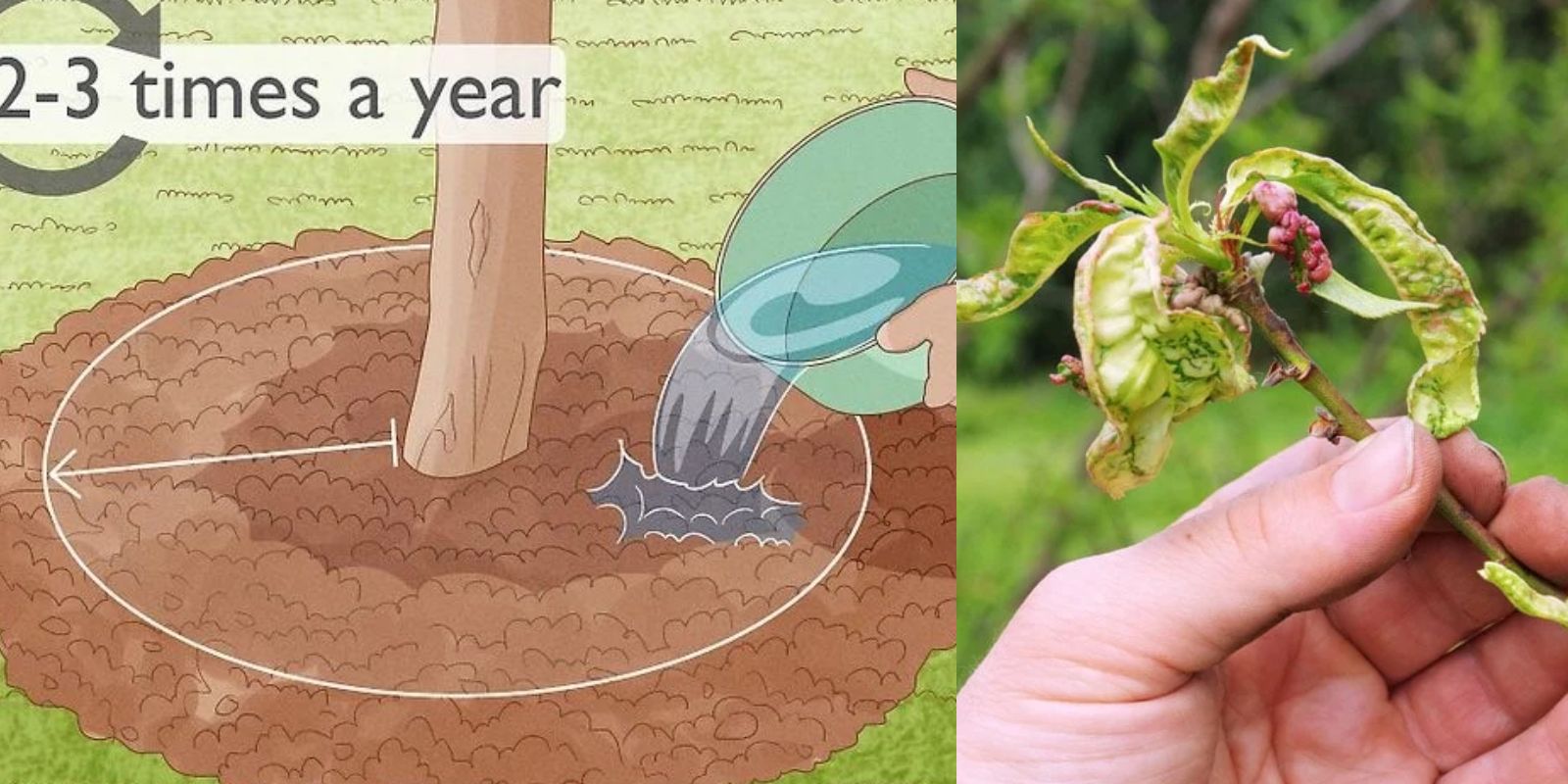Peach trees are beloved for their delicious fruits and beautiful blooms, but they can be susceptible to various diseases. One of the most common issues is curly leaf, a fungal condition that can significantly affect the tree’s health and fruit production. Understanding the causes, symptoms, and treatment options for curly leaf is essential for any peach tree grower. This guide will provide you with a comprehensive overview of how to treat curly leaf on peach trees effectively.
What is Curly Leaf?
Curly leaf is primarily caused by the fungus Taphrina deformans. This pathogen attacks the leaves of peach trees, leading to distorted, curled, and discolored foliage. The fungus thrives in moist conditions, making early spring an especially vulnerable time for peach trees. If left untreated, curly leaf can lead to reduced fruit yield, and in severe cases, it may weaken or even kill the tree.
Symptoms of Curly Leaf
Identifying curly leaf early is crucial for effective treatment. Here are the primary symptoms to look for:
- Distorted Leaves: The most noticeable sign is the curling and distortion of the leaves. Affected leaves may appear crinkled and malformed.
- Color Changes: Initially, the leaves may turn light green or yellow. As the infection progresses, they can develop a reddish or purplish hue.
- Leaf Drop: Infected leaves may drop prematurely, leading to a loss of foliage and decreased photosynthesis.
- Stunted Growth: Trees affected by curly leaf may exhibit stunted growth, leading to a reduction in overall vigor and fruit production.
Step-by-Step Treatment for Curly Leaf
Now that you understand the symptoms, let’s delve into the steps you can take to treat curly leaf on your peach trees effectively.
Step 1: Prune Affected Areas
The first line of defense against curly leaf is proper pruning.
- Timing: Prune your peach tree in late winter or early spring, before the buds start to break. This timing minimizes the risk of spreading the fungus.
- Tools: Use clean, sharp pruning shears to remove any infected leaves and branches. This helps prevent further injury to the tree and reduces the fungal load in your garden.
- Disposal: Properly dispose of the pruned material by either burning it or placing it in a sealed bag. Avoid composting, as this can allow the fungus to survive and spread.
Step 2: Apply Fungicides
Fungicides can be an effective way to control the spread of curly leaf. Here’s how to use them properly:
- Choose the Right Fungicide: Select a fungicide that is specifically labeled for use on peach trees. Look for products containing captan, chlorothalonil, or copper fungicides.
- Timing of Application: Apply fungicides in early spring, just before bud break, or during the dormant season. This is when the tree is most vulnerable, and preventative treatment can help.
- Follow Instructions: Always follow the manufacturer’s instructions for application rates and timing. Reapply as directed, especially after rain or heavy watering.
Step 3: Improve Air Circulation
Good air circulation around your peach tree is crucial for preventing fungal diseases like curly leaf.
- Spacing: Ensure your trees are adequately spaced apart to allow for airflow. Overcrowded trees are more prone to moisture retention, creating a favorable environment for fungal growth.
- Canopy Management: Consider thinning the canopy to allow sunlight and air to penetrate. This can help reduce humidity levels around the leaves.
Step 4: Maintain Tree Health
A healthy peach tree is better equipped to resist diseases. Here are some tips for maintaining overall tree health:
- Watering: Water your peach trees deeply but infrequently to encourage strong root growth. Avoid overhead watering, which can lead to increased humidity around the leaves.
- Fertilization: Fertilize your trees with a balanced fertilizer in early spring to promote vigorous growth. Healthy trees are more resilient to disease.
- Mulching: Apply organic mulch around the base of the tree to conserve moisture, suppress weeds, and improve soil quality.
Step 5: Monitor and Follow Up
Regular monitoring is crucial for preventing the recurrence of curly leaf.
- Visual Checks: Frequently inspect your peach trees for signs of curling leaves or other symptoms of disease. Early detection is key to effective management.
- Document Findings: Keep a gardening journal to track any changes in the tree’s condition, including when symptoms appear and the effectiveness of treatments.
Additional Preventative Measures
In addition to the above steps, consider implementing the following preventative measures:
- Choose Resistant Varieties: When planting new peach trees, consider selecting varieties that are resistant to curly leaf. Some examples include ‘Redhaven’ and ‘Elberta’.
- Adjust Planting Location: If possible, plant your peach trees in locations that receive full sun and have good drainage. Avoid low-lying areas where water may collect.
- Practice Crop Rotation: If you are growing multiple fruit trees, rotate their planting locations each year to reduce the buildup of pathogens in the soil.
Conclusion
Curly leaf on peach trees can be a frustrating issue, but with proper identification, intervention, and ongoing care, you can effectively manage and prevent this disease. By following these steps—pruning affected areas, applying fungicides, improving air circulation, maintaining tree health, and monitoring your trees—you can ensure that your peach trees thrive and produce abundant fruit for years to come.
Final Thoughts
Don’t let curly leaf ruin your peach harvest! With the right knowledge and care, you can cultivate a healthy, productive peach tree. Share your experiences and tips with fellow gardeners to help spread awareness about this common issue.
Ready to take action? Share your peach tree care journey with us and let’s grow together!
#PeachTrees #CurlyLeaf #GardeningTips #FungalDisease #OrganicGardening #FruitTreeCare #GardenCommunity

